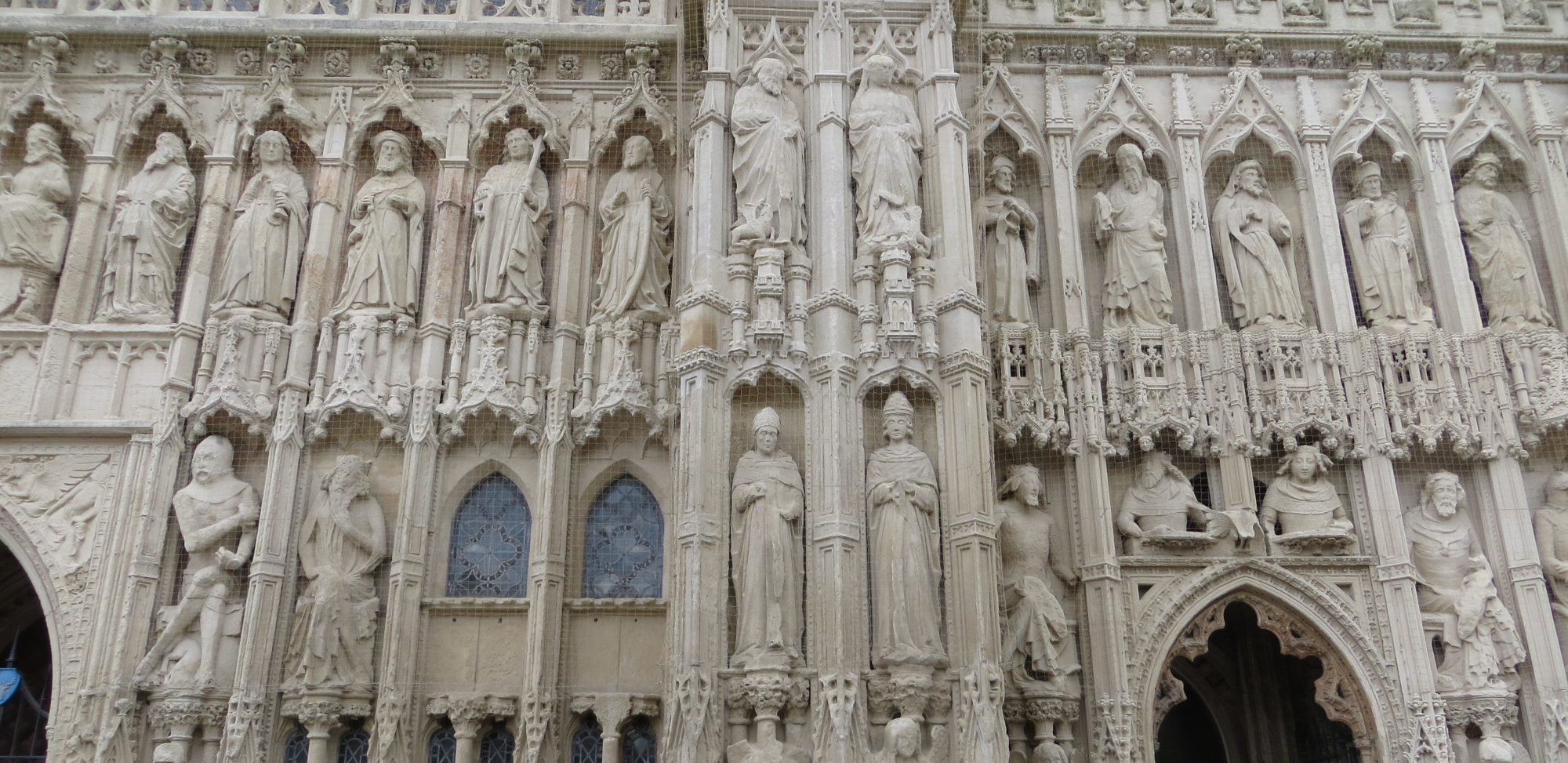According to the Pope’s ‘nuptial anthropology’, marriage partners are not merely turned towards one another in a dualistic relationship: they are also open towards a third, towards the child which expresses the unity of both in one flesh. Angelo Scola describes the structure of this relationship as one of ‘asymmetrical reciprocity’. It is precisely in this respect that marriage mirrors the relations of the Holy Trinity. The mystery of the Mass has the same root as Christian marriage. The union between Christ the Bridegroom and his Bride the Church is a covenant in the Holy Spirit. The liturgy enacts the marriage of the Lamb, combining the wedding banquet of the Last Supper with the redemptive act of the Passion. Furthermore the trinitarian character of the Mass makes it ‘asymmetrical’ in the same way that marriage is asymmetrical (cf. Ephesians 5:31-2).
The ‘watermark’ of the Trinity is found throughout all of creation at every level, wherever the distinct identities of two things are preserved (and deepened) by uniting them in a third. Human and divine natures are united in the Person of the Son (Chalcedon). God and humanity are united in the sacrament of the Church (Vatican II). Man and woman are united in the ‘one flesh’ of marriage. Reason and feeling are united in the intelligence of the heart.
The ‘watermark’ of the Trinity is found throughout all of creation at every level, wherever the distinct identities of two things are preserved (and deepened) by uniting them in a third. Human and divine natures are united in the Person of the Son (Chalcedon). God and humanity are united in the sacrament of the Church (Vatican II). Man and woman are united in the ‘one flesh’ of marriage. Reason and feeling are united in the intelligence of the heart.
One surprising conclusion from this might be that many seemingly unrelated problems in the Church have a common cause. The crisis over sexuality, brought into the open by the reaction to Humanae Vitae in 1968, stems from the mentality that fails to understand the true nature of the ‘asymmetric’ relationship between man and woman. This is the same mentality that fails to understand the relationship between priest and people in the liturgy. This failure may express itself either in a clerical domination of the laity, or in a reversal of that relationship that eliminates all sense of the transcendent. On the one side, we find a poisonous cocktail of clericalism, aestheticism and misogyny. On the other, we observe politically correct liturgies devoted to the themes of justice and peace: everyone sitting in a circle, passing the consecrated chalice from hand to hand, with the priest improvising parts of the eucharistic prayer in order to make it more relevant and friendly. The icy ‘coldness’ of clericalism is answered by the melting ‘warmth’ of the community-oriented Mass, and the sentimental empowerment of the laity. It is hard to say which is worse.
The post-conciliar period emphasized the horizontal dimension of the liturgy (social concern) over the vertical (the act of worship). Whole religious orders went into decline as the communitarian aspect of their mission took precedence over the liturgical, the love of neighbour over the love of God. But according to trinitarian anthropology, the human person is by its very nature other-centred. We love God, and this opens us to the life of the other; we love our neighbour, and this opens us to the love of God. The love of God sends us out to do good, because it reveals who we are, self and neighbour both. We are then not (only) imitating the love of God that we see demonstrated in the liturgy, but living the liturgy out in the world. The liturgy is not (merely) separate in a horizontal sense from what goes on outside, but separate in the sense of being ‘interior’, of revealing the inner meaning and purpose of what lies outside. Sacred space, sacred time and sacred art are distinctive, not (just) as belonging to a parallel world, but as defining the centre of this world: the world in which we live and work.
Stratford Caldecott Liturgy and Trinity: Towards an Anthropology of the Liturgy – Second Spring (see Mystagogy)
